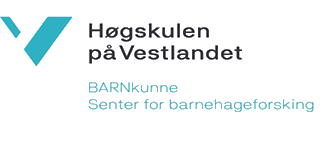Utebarnehager – et sted for demokratisk praksis?
Sammendrag
The questions in the title is posed to discuss how an outdoor kindergarten space is contextualized and understood by those who are staying there. Nature is often seen as an especially open space, free from strong guidelines and structures. Being part of an educational practice gives the place new structures. The activities the children participate in and the employees expressed attitudes and practices are part of different discourses, which give certain limits or possibilities for what is going on at the Hut, and thus influence a democratic practice. Especially children’s play activities represent an opposition to the adult’s framing of the place. Democracy presupposes some frames, but if the frames in an institution are too limited this will possibly inhibit such a practice (Biesta 2009, Lawy & Biesta 2006).
Keywords: outdoor kindergartens, place, nature, democracy, contextualisation
Fulltekst
Publisert
Hvordan referere
Utgave
Seksjon
Emneord (Nøkkelord):
Keywords, outdoor kindergartens, place, nature, democracy, contextualisation



